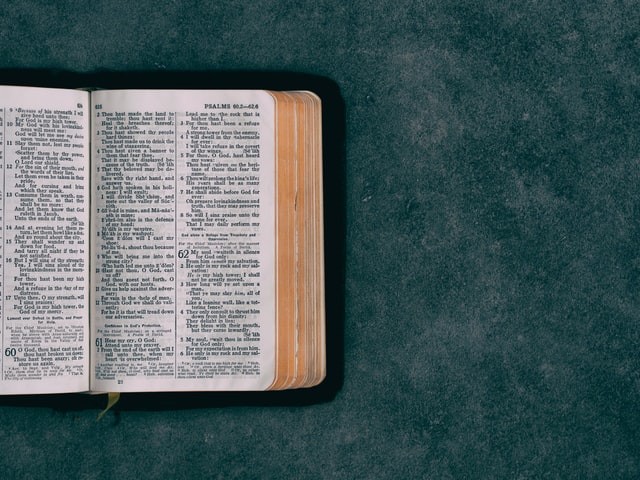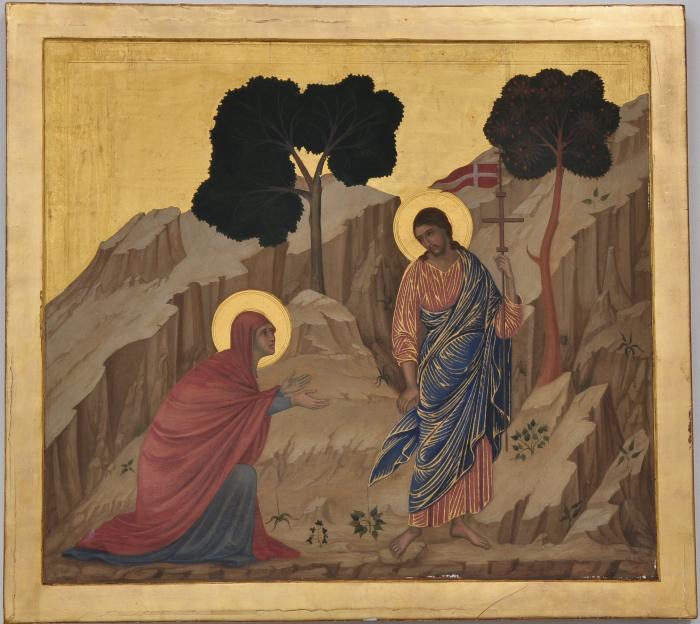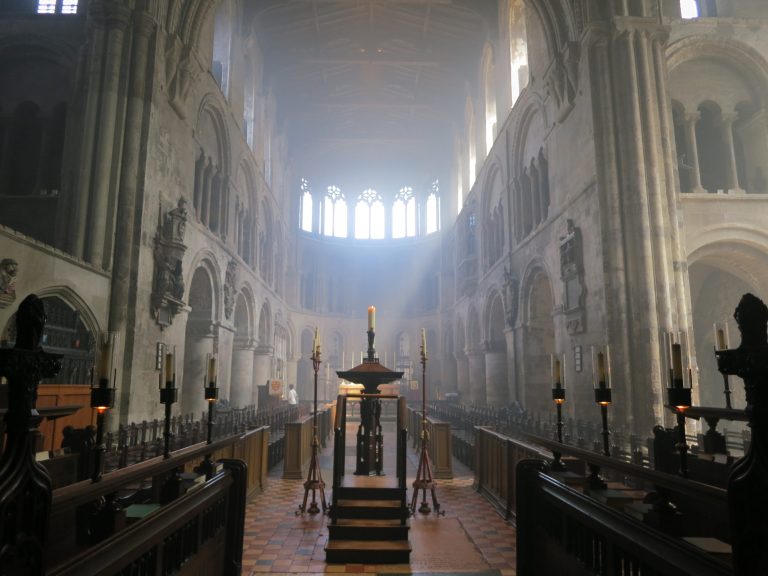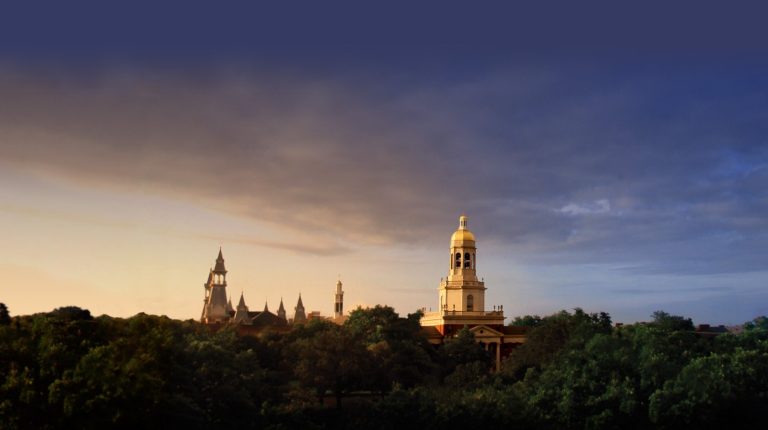Banning the Bible: Did It Really Happen in the Medieval World?
Yes, it did. But not the way you were taught in Sunday School.
Let me explain.

Last week I stood under the Tudor arch of St. Bartholomew the Great in London (unfortunately still marred by scaffolding). If it had been the 16th century, I would have looked out over an open grassy field just outside the northern city wall. As it was the 21st century, however, I looked at a paved circular area. The street and sidewalk run in a circle around a small fenced park, and the entire area is surrounded by the Victorian stalls of the Smithfield meat market, St. Bartholomew’s Hospital, modern businesses, and several plaques commemorating the significant historical events that occurred here: the execution of the Scottish hero William Wallace in 1305 (forever immortalized by Mel Gibson in Braveheart), the death of Wat Tyler and the end of the 1381 Peasants’ Revolt, and the burning of Protestant martyrs during the brief reign of the Catholic Queen Mary I (1553-1558). The commemorative inscription of this last event reads: “Within a few feet of this spot, John Rogers, John Bradford, John Philpot, and other servants of God, suffered death by fire for the faith of Christ, in the years 1555, 1556, 1557.”
According to popular tales, Queen Mary actually sat under this Tudor arch of St. Bart’s eating chicken and watching the Protestant martyrs burn. Also according to popular tales, the martyrs defense of the Bible played a central role in their condemnation. For example, John Rogers–the very first Protestant martyr to be burned at Smithfield–was recorded in Foxe’s Book of Martyrs as becoming involved with the famous English Bible translators William Tyndale and Miles Coverdale and (after his arrest for preaching “the true doctrine taught in King Edward’s time”) marched to his death quoting scripture: “he constantly and cheerfully took his death with wonderful patience, in the defence and quarrel of the gospel of Christ.”
So much for popular tales!

Queen Mary didn’t sit under the Tudor arch at St. Bartholomew’s for her gruesome dinner and movie. How do I know? Because the arch wasn’t built until 1595. Queen Mary died in 1558, thereby paving the way for the Protestant Queen Elizabeth I. Mary certainly could have sat within the general vicinity of the arch, but–clearly–the story and location about her evening entertainment in Smithfield have become garbled with age. The Protestant martyrs who died at Smithfield did staunchly promote English versions of the Bible, but–just as with Queen Mary’s meal–popular perceptions about their promotion of the English Bible have become garbled with age. Indeed, popular perception often renders the medieval church as so forcefully banning vernacular Bibles that ordinary folk lacked access to scripture. I can’t help but quote the Historicist website article “Why Were our Reformers Burned?” since it illustrates my point so vividly: it claims that the medieval church in England “was a Church without a Bible.”
As I established in my previous post, vernacular translations of the Bible existed in England long before the Reformation. Moreover, they were used by clergy and laity alike. I venture that many late medieval English folk were just as well-versed in scripture as many of their Reformation counterparts (although it is certainly true that the sections of scripture they knew would have varied).
The question then stands: what about medieval ecclesiastic
al proclamations banning vernacular translations of the Bible?
Yes, the medieval church did make prohibitions against vernacular Bibles. Pope Gregory VII forbade publication of vernacular scripture in Bohemia in 1080; the papacy declared in 1199 that vernacular translations were praiseworthy but dangerous; the Synod of Toulouse in 1229 directed a canon against the misuse of scripture (which included forbidding vernacular texts); and–the most famous–in 1408 the Third Synod of Oxford forbade translating the Bible into English.
But these restrictions on vernacular Bibles must be contextualized. As Frans van Liere so astutely states in his An Introduction to the Medieval Bible (p. 203): “On the one hand, there are a number of edicts and injunctions against the translating of the Bible into the vernacular, and against the use of such Bibles. On the other hand, no text was more widespread and popular than the Bible in its many vernacular versions, and many of these do not seem to have raised an eyebrow from the ecclesiastical authorities. Historians studying this period must thus acknowledge a wide range of opinions and practices that were not always consistent with each other.”
In other words, the medieval Catholic church never comprehensively banned vernacular Bibles. See van Liere again: “Contrary to popular perception, there was no blanket prohibition against biblical translation in the vernacular in the Middle Ages.” Vernacular Bibles, for the most part, flourished and were accepted by ecclesiastical authorities. This is true even in England, as attested by the widespread flourishing of the Wycliffite Bible among Catholic clergy and laity alike.
It was mostly during moments of stress and fear that localized and reactionary prohibitions against Bibles were made. Note that three of the four prohibitions mentioned above were made in direct response to heresy threats: the Waldensians and Albigensians in 1199 and 1229, and the Lollards in 1408. The historical origins of the prohibitions (localized responses) and the continued flourishing of vernacular scripture despite the prohibitions also suggests that the concern was more with untrained lay folk teaching and preaching the Bible, and thereby spreading heretical ideas, than with vernacular scripture itself. As van Liere writes, “There was a large corpus of medieval vernacular translations and paraphrase of biblical texts, and there were no objections against their use, as long as these texts and their uses avoided association with heretical groups.”
So I will say one more time: yes, the medieval church did ban vernacular Bibles. But not in the way most modern Protestants think. The bans were localized, reactionary, and not very effective. Medieval vernacular Bibles existed and continued to flourish before the Reformation.
To paraphrase one of my favorite theologians, a text without a context is a pretext for saying whatever you want (thank you, Ben Witherington III!). Unfortunately for the reputation of the medieval church, the medieval prohibitions against Bible translations have often been taken out of context and made–quite frankly–to say whatever we as Protestants have wanted.



